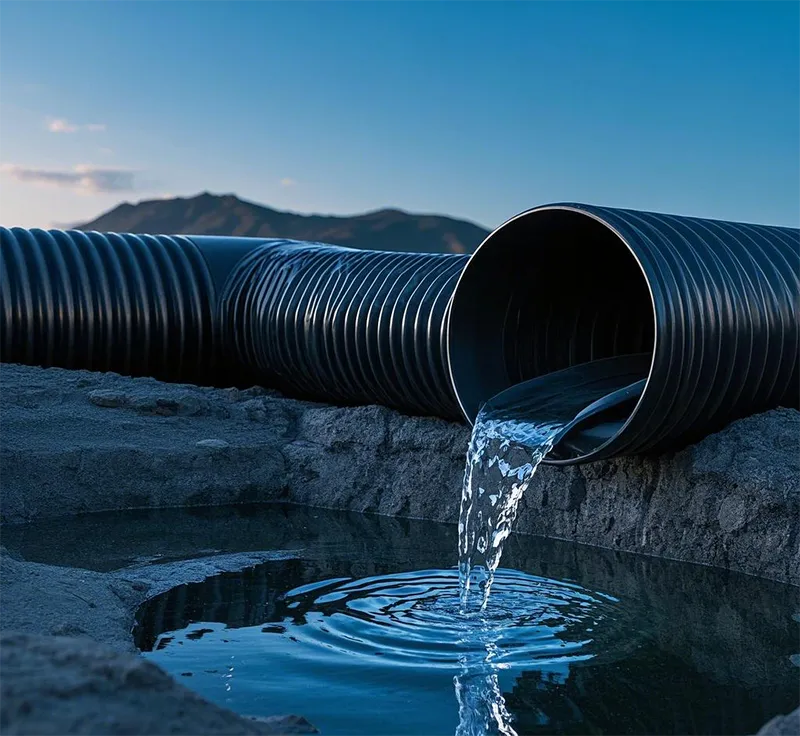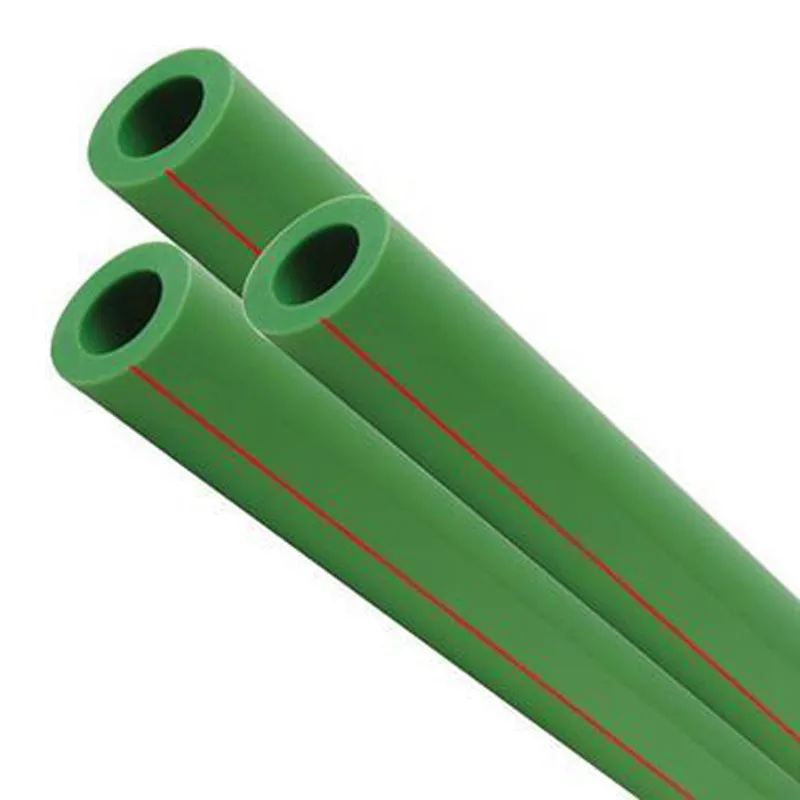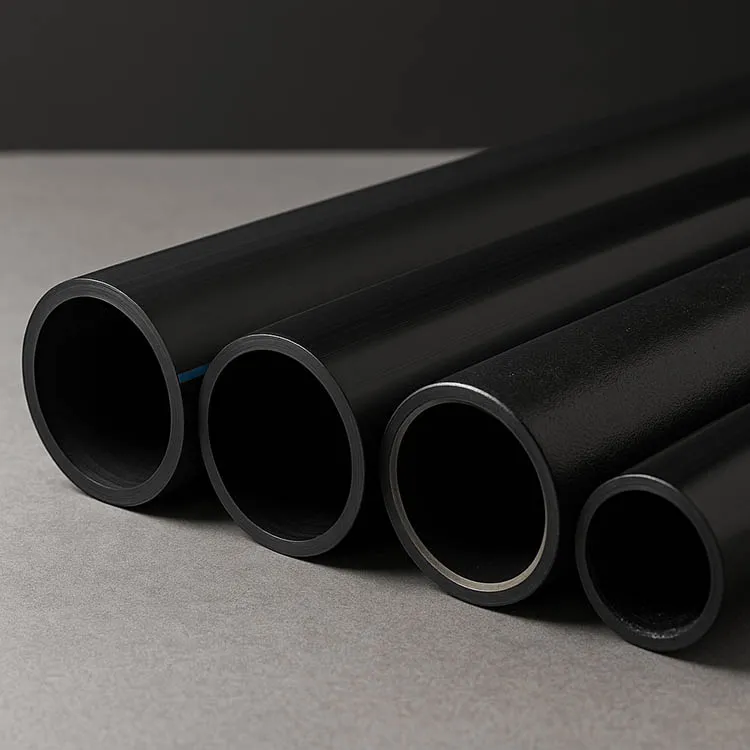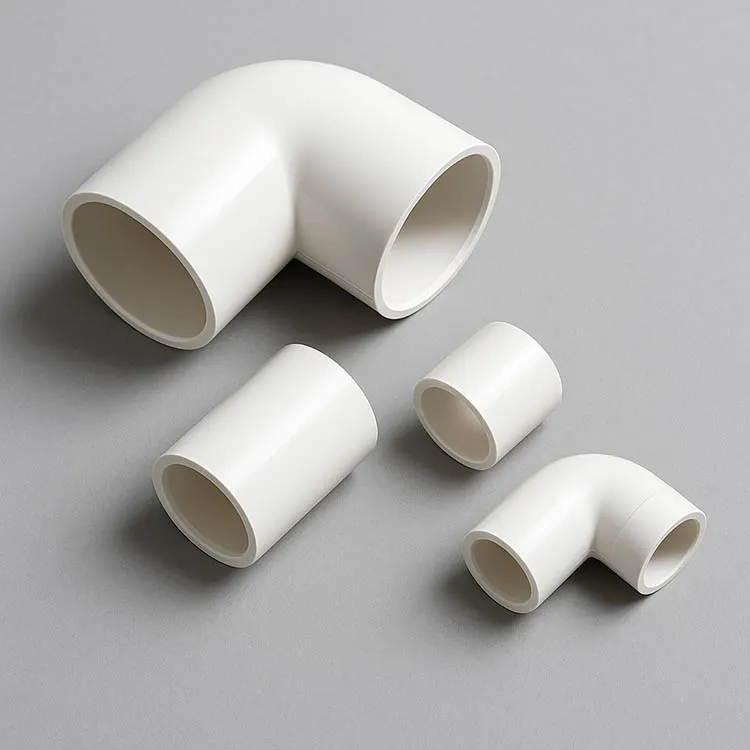Performance advantages of HDPE double-wall corrugated pipe
Excellent physical properties
High ring stiffness: The unique corrugated structure of HDPE double-wall corrugated pipe gives it excellent ring stiffness, which can withstand a lot of external pressure. It can resist vehicle rolling, soil extrusion, etc. in buried environment, ensuring that the pipe is not easy to deform and greatly extending its service life.
Good flexibility: The pipe has good flexibility and can adapt to different geological conditions. It can bend without breaking in earthquakes, ground subsidence, etc., to ensure the continuity and stability of the drainage system.
Outstanding chemical stability
Strong corrosion resistance: Made of high-density polyethylene, it has excellent tolerance to chemicals such as acids, alkalis, and salts. In drainage scenarios in various complex chemical environments, such as industrial wastewater discharge, it can maintain stable performance and not be corroded.
Good anti-aging performance: It has good UV resistance and anti-aging ability. Even if it is exposed to outdoor environments for a long time or buried underground, it can maintain performance, reduce replacement frequency, and reduce maintenance costs.
Excellent hydraulic properties
Smooth inner wall: The inner wall of the pipe is extremely smooth, with a low roughness coefficient and low water flow resistance. It can effectively increase the drainage speed, increase the drainage flow, reduce the risk of blockage, and improve the overall efficiency of the drainage system.
Strong drainage capacity: Compared with other pipes of the same caliber, HDPE double-wall corrugated pipe has a stronger water-passing capacity, can quickly discharge rainwater and sewage, and can effectively cope with drainage needs in extreme weather such as heavy rain.
Convenient construction characteristics
Light weight: The material is light, easy to carry, transport and install, and no large-scale construction equipment is required, which reduces the difficulty and cost of construction and improves construction efficiency. It is especially suitable for areas with limited construction space.
Simple connection: It adopts socket connection or electric fusion connection, which is easy to operate, firm in connection, and has good sealing. It can effectively prevent water leakage and ensure the safety and reliability of the pipeline system.
Significant environmental advantages
Non-toxic and harmless: HDPE material is non-toxic and odorless. It will not cause harm to the environment and human health during production, use and disposal. It can be safely used in domestic water, drainage and other fields.
Recyclable: It has good recycling value, and the discarded pipes can be recycled and processed into other plastic products, which meets the requirements of environmental protection and sustainable development.
Application fields of HDPE double-wall corrugated pipes
Municipal engineering field
Urban rainwater discharge: It is widely used in rainwater collection and discharge systems in urban roads, squares, parks and other areas, which can quickly introduce rainwater into the urban rainwater pipe network and effectively alleviate urban waterlogging.
Urban sewage transportation: As the main pipeline for urban sewage discharge, it transports domestic sewage and industrial wastewater from various discharge points to the sewage treatment plant to ensure safe and efficient sewage transportation.
Construction engineering field
Building community drainage: In residential and commercial areas and other construction areas, it is used to discharge domestic sewage, rainwater, etc., and connect the drainage system in the building with the municipal drainage network.
Underground space drainage: Such as drainage of underground garages, basements, etc., can effectively deal with moisture and water accumulation problems, and ensure the safety and normal use of underground space.
Industrial field
Chemical wastewater discharge: Various corrosive wastewaters generated in the production process of chemical enterprises can be safely transported to treatment facilities through HDPE double-wall corrugated pipes to meet corrosion resistance requirements.
Drainage in electronics, pharmaceuticals and other industries: For industries such as electronics and pharmaceuticals that have high requirements for water quality, its environmental and hygienic characteristics can ensure that no secondary pollution is caused to the water quality during the drainage process.
Agricultural field
Farmland irrigation drainage: Drainage pipes used in farmland irrigation systems can promptly remove excess water from farmland, prevent water accumulation from affecting crop growth, and improve farmland drainage efficiency.
Rural sewage discharge: In sewage treatment projects in rural areas, it can be used as a sewage collection and discharge pipe to improve the rural water environment.
Other fields
Power communication protection: It can be used as a protective sleeve for cables and optical cables to provide protection for power and communication lines, prevent the lines from being damaged by external factors, and ensure stable signal transmission.
Sponge city construction: It plays an important role in the collection, infiltration, and discharge of rainwater in sponge cities, which helps to achieve the effective use of rainwater and the balance of urban ecology.
HDPE double-wall corrugated pipe installation, connection and maintenance guide
I. Preparation before installation
1. Material inspection
Check that the pipes and fittings are free of cracks and deformation, and the specifications meet the design requirements.
Ensure that the sealing ring is not aged and has good elasticity.
2. Tool preparation
Cutting tools (special cutting machine or hand saw), rubber hammer, lubricant (such as soapy water), cleaning cloth, hot melt machine (if welding is required).
3. Foundation treatment
Trench excavation: width is pipe diameter + 50cm, slope meets design requirements, avoid water accumulation.
Pad laying: 10-20cm sand or gravel, compact and level, slope consistent with the pipeline.
Ⅱ. Installation steps
1. Lower pipe
Use flexible sling or nylon rope to lift, gently put it in the groove to avoid collision with hard objects.
2. Connection method
Socket connection (commonly used)
1. Clean the inside of the socket and the outside of the plug, and apply lubricant.
2. Put the sealing ring into the socket groove correctly to avoid twisting.
3. Insert the plug to the mark line, tap it with a rubber hammer to ensure it is in place, and check whether the sealing ring is displaced.
Hot-melt connection (high sealing requirement)
1. Align the pipe ends and heat them to a molten state (about 210±10℃) with a hot-melt machine.
2. Quickly dock and apply pressure, and avoid movement during cooling.
3. Pipeline laying
Lay according to the designed slope, reserve expansion space, and prevent temperature deformation.
4. Backfill requirements
Layered backfill: backfill with fine sand or soft soil within 50cm on the side and top of the pipe, and compact it manually to avoid direct mechanical rolling.
Upper backfill: compact in layers according to specifications, with each layer thickness ≤30cm.
III. Maintenance management
1. Daily inspection
Regularly inspect the interface and pipe body for leakage and deformation, and check the water accumulation in the well.
2. Regular cleaning
Clear the pipeline before the rainy season, use a high-pressure water gun to flush, and prohibit the use of sharp tools.
3. Seasonal protection
Winter insulation: cover with insulation material when the covering soil thickness is insufficient.
Summer sun protection: cover the exposed pipeline with sunshade cloth to prevent ultraviolet aging.
4. Emergency repair
Minor damage: seal with HDPE repair tape or epoxy resin.
Major damage: cut the damaged section, replace with a new pipe and hot-melt connection.
IV. Common problem handling
Leakage at the connection: check whether the sealing ring has fallen off, reinstall or replace; if the clamp is loose, tighten the bolts.
Pipe deformation: dig and replace locally, and strengthen the backfill density.
Interface detachment: insufficient socket depth or insufficient hot melt, need to be reconnected.
V. Precautions
Environmental adaptability: The ambient temperature during hot melt connection should be between -5℃ and 45℃, and the pipe needs to be preheated at low temperature.
Test acceptance: perform a water flow test after installation to check for leakage.
What role does the "peak" in HDPE double-wall corrugated pipe play?
Enhance structural strength and improve ring stiffness: The corrugated structure greatly improves the ring stiffness of the pipe without increasing the material thickness, and enhances the ability of the pipe to resist external pressure. For example, when the pipe is buried for drainage, it can withstand the load of the soil above and ground vehicles without deformation or rupture.
Disperse stress: When the pipe is subjected to external force, the corrugated shape can evenly disperse the stress, avoid stress concentration, enable the pipe to withstand greater external force, and extend the service life. Increase flexibility Increase flexibility to facilitate construction and laying: The corrugation gives the pipe good flexibility, so that it can adapt to the changes in different terrains, can bend to a certain extent, and is convenient for laying at the construction site, reducing the use of pipe fittings and reducing construction costs.
Resist ground subsidence: In areas where geological conditions are unstable or ground subsidence may occur, the flexible HDPE corrugated pipe can deform with slight subsidence or displacement of the ground, is not easy to break, and ensures the integrity of the pipeline system. Improve fluid delivery performance and increase flow area: The presence of corrugations increases the flow area inside the pipe relative to ordinary straight pipes. Under the same pipe diameter, it can improve the fluid delivery capacity, reduce water flow resistance, and make drainage, water delivery and other processes smoother.
Promote fluid turbulence: The corrugated structure will cause a certain degree of turbulence in the fluid in the pipe, which can prevent the precipitation and adhesion of impurities in the fluid and reduce the possibility of pipe blockage. It is especially suitable for conveying sewage and rainwater containing impurities. Save materials and optimize material utilization: The corrugated structure improves the performance of the pipe. On the premise of meeting the requirements of the project, the amount of material used can be reduced and the cost of raw materials can be reduced.
Reduced overall cost: Due to its good performance, it can save manpower, material resources and time costs during the installation process, and has a long service life and low maintenance costs in the later stage, thereby reducing the overall cost of the entire project.




939.webp)


294.webp)
476.webp)
420.webp)
146.webp)
460.webp)
287.webp)
274.webp)
688.webp)


